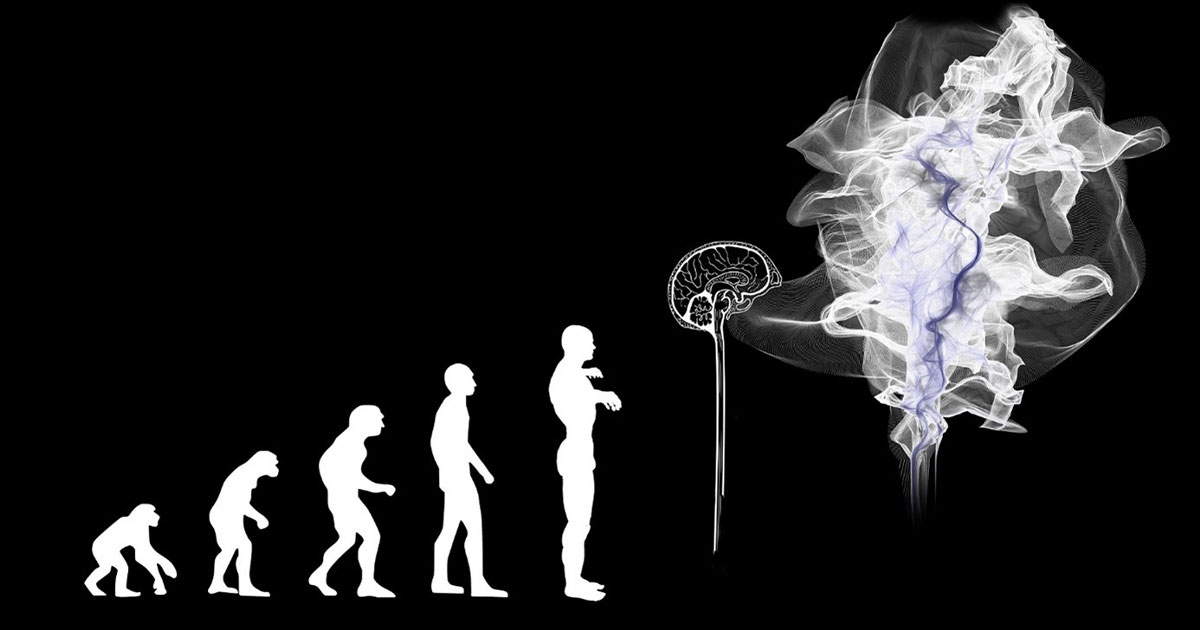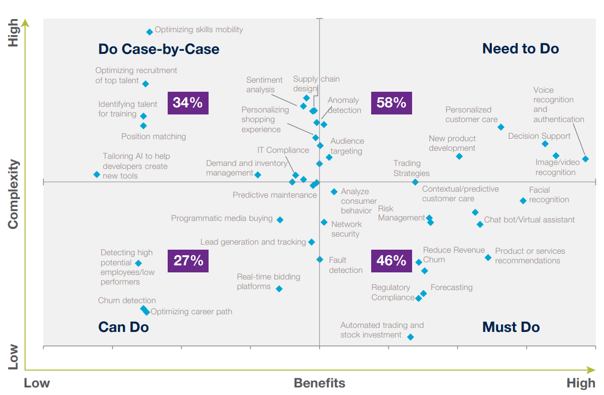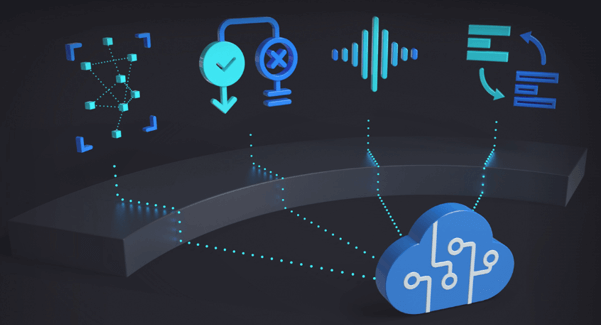Mais ce n'est que le début. Nous serons étonnés de voir ce que ces technologies peuvent faire pour nous dans les années à venir. Le plus important est que ces technologies passent de l'expérimental à l'usage quotidien dans nos vies et nos entreprises en un rien de temps. Ces technologies ne sont pas là pour nous remplacer, mais pour nous aider dans les tâches ennuyeuses et répétitives. Des tâches dans lesquelles l'homme effectue des activités cognitives qui ne représentent pas un effort pour nous, mais qui sont présentes dans notre vie quotidienne et notre entreprise. Tout cela crée une multitude de possibilités pour la numérisation complète des entreprises et peut donc conduire à de grandes économies et à l'optimisation des processus commerciaux [18], [19]. Des études récentes montrent par exemple que les agents d'appel basés sur l'IA remplaceront les humains dans 15% des communications avec les clients au cours des trois prochaines années, ce qui représente une économie estimée à 80 milliards de dollars US [20]. Beaucoup des technologies d'IA mentionnées ci-dessus sont déjà utilisées comme services cognitifs dans le cloud, via l'API REST ou d'une autre manière. Elles deviennent rapidement des objets d'usage courant et peuvent être utilisées par des personnes normales et des entreprises.
Mais comment puis-je intégrer ces technologies d'IA dans mon entreprise? Comment tous ces services cognitifs et l'IA peuvent-ils m'aider dans mon entreprise, dans les nouveaux besoins des clients et dans l'optimisation des processus? La réponse est que de nombreuses entreprises disposent déjà des données et de l'accès aux technologies nécessaires pour utiliser ces services cognitifs d'IA afin de soutenir leurs activités. De nombreuses entreprises ont commencé il y a longtemps à collecter des données et à utiliser des technologies de big data. Beaucoup de ces données restent stockées dans des data lakes ou des mémoires numériques similaires, sans être explorées ou utilisées. Ces sources recèlent un grand potentiel si l'on utilise les technologies d'analyse de données Big Data et de services cognitifs AI. Une seule source ou une combinaison de plusieurs sources suffit pour réaliser de nombreux cas d'utilisation et optimiser les processus. Par exemple, la même vidéo en streaming provenant de caméras sur place pourrait servir à différentes fins. Elle peut être réutilisée pour la détection automatique d'intrus, la sécurité des personnes dans des environnements dangereux, le rapport automatique des activités industrielles et des stocks, le tri de la production et la détection des erreurs. Dans ces cas, les services cognitifs de la vision artificielle se chargeraient de la plupart des tâches. Comme autre exemple, une source unique de documents, de textes ou de messages écrits peut être utilisée pour la classification automatique de documents, le classement de documents, le résumé et l'extraction d'idées ou de mots clés importants. Il peut également être utilisé comme source d'informations lors de recherches intelligentes. Dans tous ces cas, les services d'IA cognitive pour la parole seront d'une grande aide pour le développement de solutions.
Et dans quelle mesure les entreprises sont-elles aujourd'hui à l'aise avec les technologies d'IA et les services cognitifs? Les entreprises utilisent-elles toutes ces technologies pour améliorer réellement leur activité et leurs relations avec les clients? La réalité est que de nombreuses entreprises manquent d'une vision et d'une stratégie cohérentes en ce qui concerne l'utilisation de l'analyse des données volumineuses, de l'IA et des services cognitifs. De nombreuses entreprises ont tout simplement échoué ou luttent maintenant pour maintenir l'utilisation de ces technologies dans leur activité [21], [22], [23]. Les raisons pour lesquelles de nombreuses entreprises ne réussissent pas à utiliser les technologies d'IA et de Big Data sont multiples. L'une des explications est que de nombreuses entreprises se concentrent sur la résolution de cas isolés ou, tout au plus, de plusieurs cas similaires. Les entreprises développent des pipelines de données et des modèles d'IA à partir de zéro et, dans la plupart des cas, en utilisant des technologies open source. Par conséquent, l'effort pour adapter leur cadre aux nouvelles technologies d'IA ou aux nouvelles données, pour mettre à jour les modèles d'IA et pour entretenir l'infrastructure est si important qu'il n'est pas viable à long terme. D'autres causes sont liées au fait que, dans de nombreux cas, ni les données ni le prétraitement des données n'étaient adaptés au business case. Des études récentes montrent également que plus de la moitié des entreprises (58%) se concentrent sur la résolution des cas dits "need-to-do" et que seulement 46% des entreprises exécutent les "must-dos", qui apportent de grands avantages avec peu de complexité [24].




